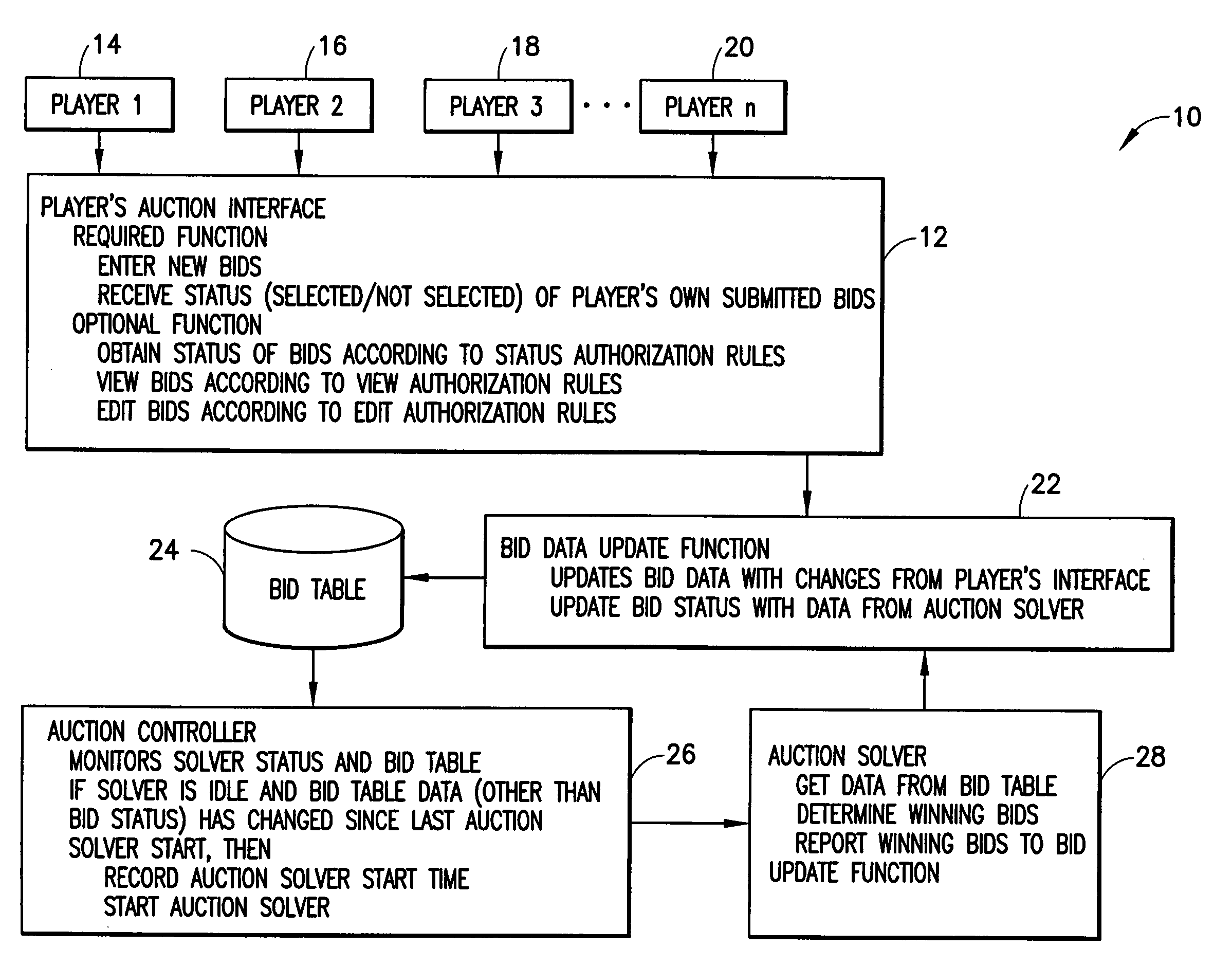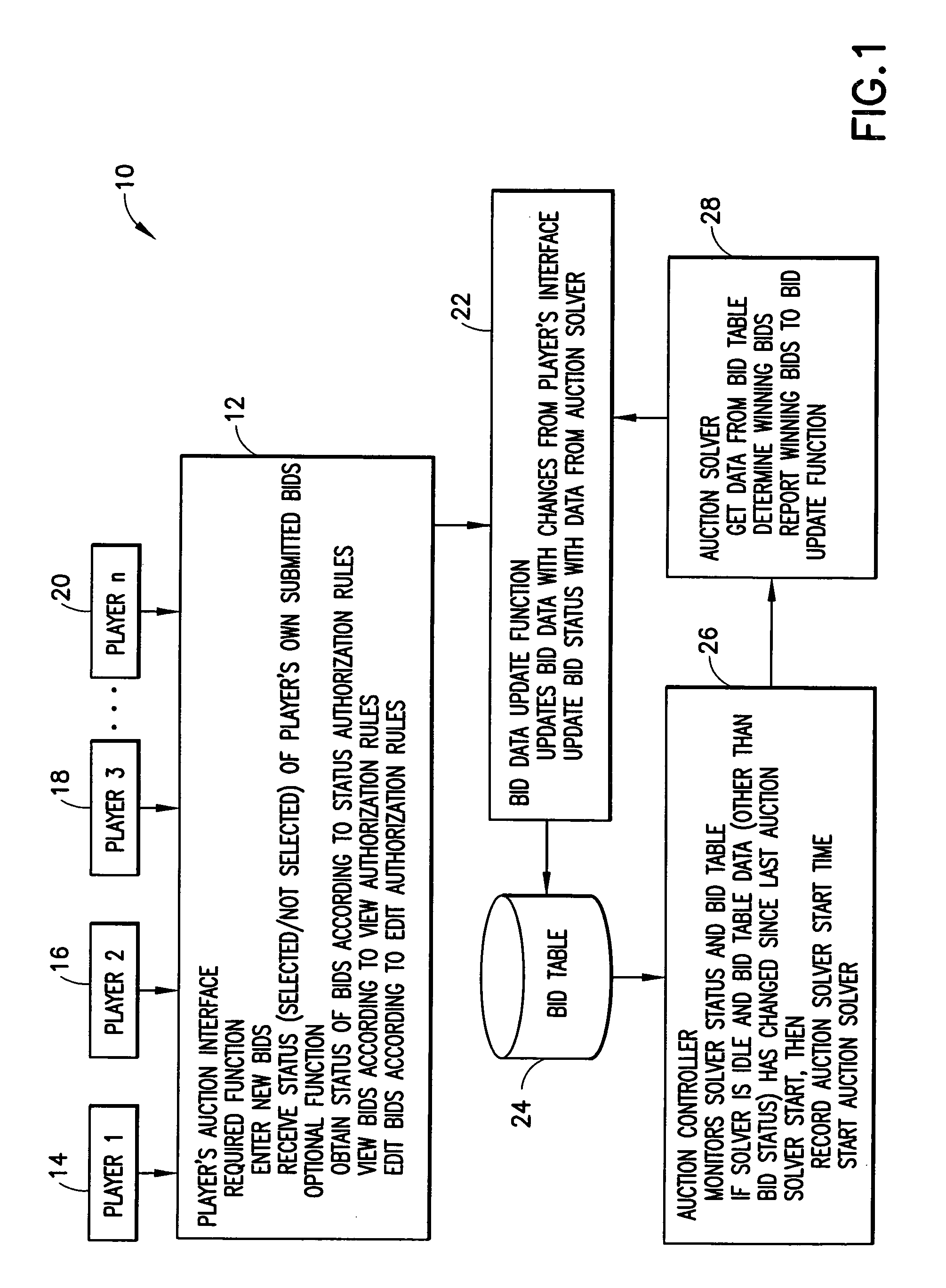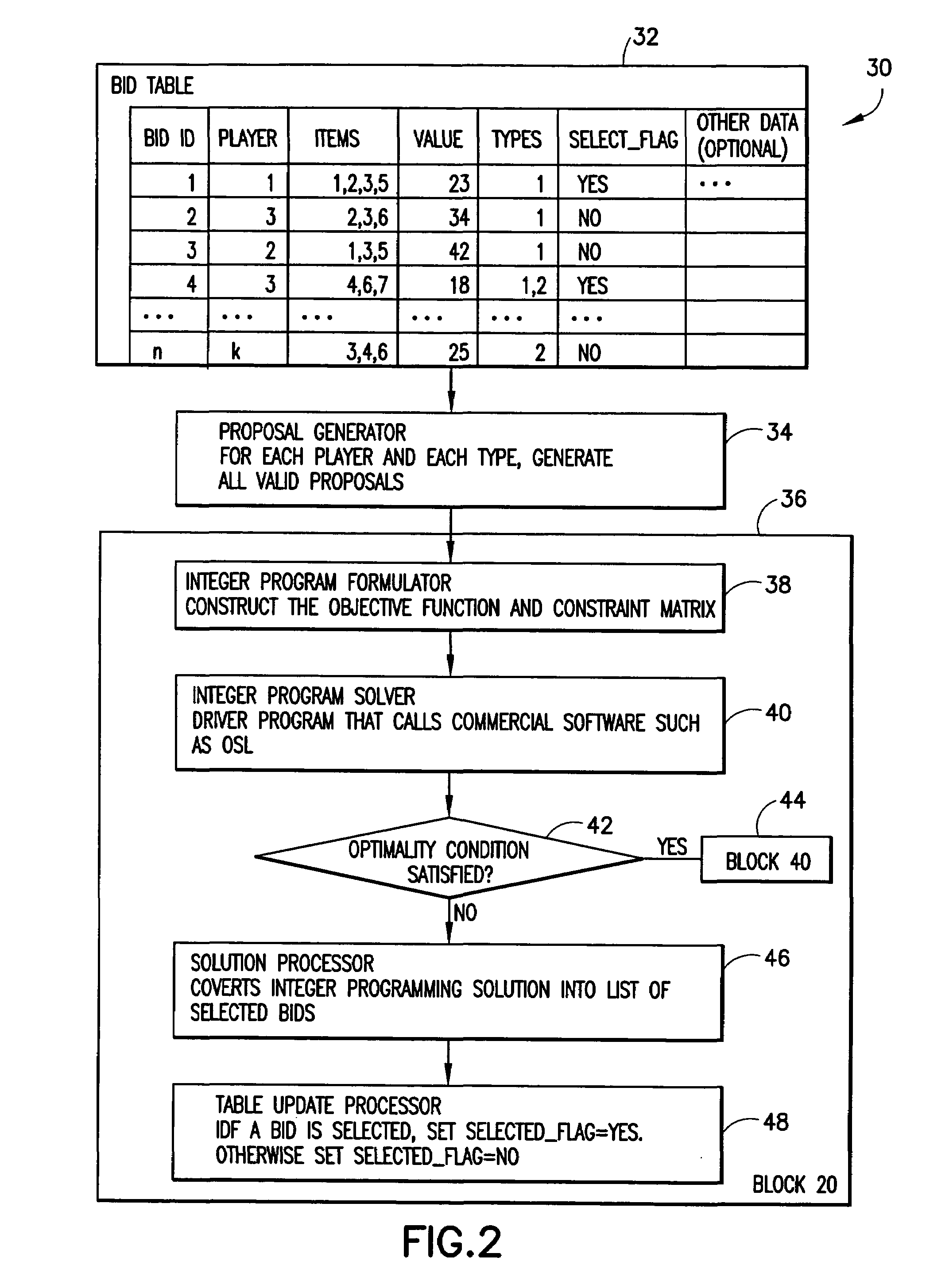Method for determining the set of winning bids in a combinatorial auction
- Summary
- Abstract
- Description
- Claims
- Application Information
AI Technical Summary
Benefits of technology
Problems solved by technology
Method used
Image
Examples
Embodiment Construction
[0025]As summarized above, we disclose a method for computing the set of winning bids for a combinatorial auction. We assume that all data describing the current players and bids is available in some electronic form.
[0026]Our method preferably supports two forms of combinatorial bidding, conjunctions (ands) and disjunctions (ors). Research in the area of combinatorial bid representation remains active. Noam Nisan provides a discussion of bid representations in his paper, “Bidding and Allocation in Combinatorial Auctions”, presented at the 1999 Conference “Northwestern's Summer Workshop in Microeconomics.” The representation we have chosen allows a player to limit his total liability while placing bids on an arbitrary number of arbitrary combinations.
[0027]Each player can place an arbitrary number of bids. Each bid can contain any combination of items. A bid typically consists of the following data elements: player id, bid value, and items included in the bid.
[0028]Each player can al...
PUM
 Login to View More
Login to View More Abstract
Description
Claims
Application Information
 Login to View More
Login to View More - R&D
- Intellectual Property
- Life Sciences
- Materials
- Tech Scout
- Unparalleled Data Quality
- Higher Quality Content
- 60% Fewer Hallucinations
Browse by: Latest US Patents, China's latest patents, Technical Efficacy Thesaurus, Application Domain, Technology Topic, Popular Technical Reports.
© 2025 PatSnap. All rights reserved.Legal|Privacy policy|Modern Slavery Act Transparency Statement|Sitemap|About US| Contact US: help@patsnap.com



